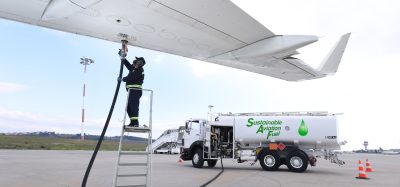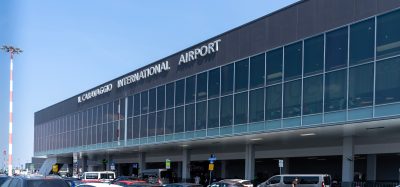Aviation Emissions, EU ETS and measurement requirements
Posted: 1 October 2010 | Jeff Poole, Director, Industry Charges, Fuel and Taxation, IATA | No comments yet
From January 2012, aircraft operators whose flights arrive in and depart from EU27 (plus Norway, Iceland and Liechtenstein airports) will have to comply with a CO2 emissions cap, as part of an expanded EU Emissions Trading Scheme (ETS). While IATA recognises that some economic measures can help to mitigate emissions, IATA remains opposed to national and regional cap-and-trade schemes for international civil aviation. This article presents the airline industry objectives and targets for addressing its emissions, the challenges faced in complying with the EU ETS requirements, and measures to be taken to find suitable outcomes.
From January 2012, aircraft operators whose flights arrive in and depart from EU27 (plus Norway, Iceland and Liechtenstein airports) will have to comply with a CO2 emissions cap, as part of an expanded EU Emissions Trading Scheme (ETS). While IATA recognises that some economic measures can help to mitigate emissions, IATA remains opposed to national and regional cap-and-trade schemes for international civil aviation. This article presents the airline industry objectives and targets for addressing its emissions, the challenges faced in complying with the EU ETS requirements, and measures to be taken to find suitable outcomes.
Historically, air transport has grown by around 5% average per annum – driven by, and facilitating, globalisation and economic development. For many years the industry has, through fleet replacement and operational improvements, improved its fuel efficiency by some 2% a year, limiting the growth of CO2 emissions to about 3% a year. Despite the airlines’ considerable efficiency improvement in the past, further emissions reductions are necessary to achieve the airline industry objectives and timelines that follow:
What are IATA/ Airline industry objectives on emissions?
IATA Member airlines have collectively adopted a set of ambitious targets to tackle global CO2 emissions.
Free webinar – The future of asset management in global aviation
15 January, 2026, 02:00PM GMT
Join this virtual panel to hear from some of the AtkinsRéalis and aviation sector experts as we discuss how asset management is changing and the impact it will have on the future operations of airports throughout the world.
◆ A cap on aviation CO2 emissions from 2020 (carbon-neutral growth)
◆ An average improvement in fuel efficiency of 1.5% per year from 2009 to 2020
◆ A reduction in CO2 emissions of 50% by 2050, relative to 2005 levels.
These targets were endorsed by the entire aviation industry in a joint industry submission to ICAO in September 2009.
IATA four pillar strategy to reduce emissions
In order to achieve carbon-neutral growth (CNG) from 2020, a multi-faceted approach is required with strong commitment from all aviation stakeholders: airlines, manufacturers, fuel suppliers, airports, and air navigation service providers. The need for the airline industry to continue to have the capacity to invest in emissions mitigation measures must be central to any approach. IATA’s four-pillar strategy provides the essential building blocks in achieving the industry’s goals and vision.
Pillar 1 – Technology
Technology provides the best prospects for reducing aviation emissions. The industry is making great advances in technology such as revolutionary aircraft designs, composite lightweight materials; radical engine advances; and biofuel development. Airlines will spend $1.5 trillion on new aircraft by 2020; some 5,500 aircraft are expected to be replaced, corresponding to 27% of the total fleet and potentially reducing CO2 emissions by 21%.
Pillar 2 – Operations
The Intergovernmental Panel on Climate Change (IPCC) published a report in 1999 identifying a 6% inefficiency in aircraft operations. More efficient aircraft operations can save fuel and CO2 emissions. IATA has been working diligently with airlines to tackle and reduce these inefficiencies. It has been estimated that improved operational practices, including reduced APU (Auxiliary Power Unit) usage, more efficient flight procedures, and weight reduction measures, will achieve 3% reduction in emissions by 2020.
Pillar 3 – Infrastructure
Infrastructure improvements present a major opportunity for fuel and CO2 reductions in the near term. IPCC estimated that there was 12% inefficiency in air transport infrastructure in 1999. Since then a 4% improvement in efficiency has been achieved. Full implementation of more efficient ATM (Air Traffic Management) and airport infrastructure could provide an additional 4% reduction in emissions by 2020. Measures include the implementation of the Single European Sky (SESAR), the Next Generation Air Traffic Management system in the USA, reorganisation of the Pearl River Delta ATM system in Hong Kong, RVSM (reduced vertical separation minima) over Russia, and flex tracks.
Pillar 4 – Economic measures
While efforts from the first three pillars will go a long way in achieving the goal of carbon-neutral growth from 2020, it will not be sufficient to ‘close the gap.’ It is estimated that around 90 million tonnes of CO2 will need to be offset in 2025 to maintain emissions at 2020 levels, costing airlines an additional $7 billion annually.
Overall, this puts the airline capital expenditure for achieving carbon-neutral growth from 2020 at $1.6 trillion.
EU ETS MRV requirements and concerns
The Directive to include aviation in the EU ETS (2008/101/EC ‘The Aviation Directive’) was adopted by the Council of the European Union in October 2008. This Directive amended the then existing EU ETS Directive (2003/87/EC) and entered into force in February 2009. Member States are now transposing the Directive into their own legislation, a process that has been far from smooth as evidenced by the fact that none of the EU States managed to meet the EC’s deadline for doing so.
Leaving aside the numerous legal and political drawbacks, the key concerns regarding the EU ETS scheme from a technical/ operational perspective are that it fails to take into consideration:
◆ the global and mobile nature of international civil aviation and aircraft
◆ the existence of tried and tested SOPs in the aviation sector, and
◆ the realities and complexities of day-to-day aircraft operations.
At the root of these concerns lies the fact that the EC – clearly not being familiar with aircraft operations – decided to simply use the EU ETS Monitoring, Reporting and Verification (MRV) requirements that were originally developed for fixed installations such as power stations as a blueprint for aircraft operations. As a result, MRV requirements for aviation have become unnecessarily complex, burdensome and too costly.
By way of illustration, one practical problem encountered by the airlines in the submission of monitoring plans for the EU ETS has been that aircraft operators buy and account for their fuel by volume but the Directive specifies the cap and MRV requirements by mass. Furthermore, fuel density can vary up to 5% during the day because of local temperature fluctuations depending on location. Resolving this issue will add to the administrative burden of compliance.
The MRG (Monitoring and Reporting Guidelines) suggests the following methods for the measurement of fuel mass:
1) Use onboard measurement equipment to determine mass directly
2) Multiply the density provided by the fuel supplier by the volume provided by the fuel supplier
3) Use the temperature of the fuel provide by the fuel supplier to determine density from standard temperature-density tables, and multiply density by the volume provided by the fuel supplier
4) Use onboard measurement equipment to determine fuel density in tanks, and multiply this value by the volume provided by fuel supplier
5) Multiply the standard density value of the fuel (0.8 kg/L) by the volume provided by the fuel supplier.
While the onboard-measurement systems of most modern aircraft types can establish the mass of fuel uplifts directly with an accuracy that is within prescribed uncertainty margins of 2.5% or 5%, depending on the total fuel consumption of the aircraft operator, the older aircraft fleets do not have this capability.
Fuel suppliers do not measure the density or the temperature of the jet fuel at uplift at most locations. More commonly observed is that the density is provided by the supplier on an ‘informal’ basis. This density tends to be measured at the tank farm and not at fuel uplift. Moreover, suppliers are reluctant to take responsibility and associated liability for the data provided.
In a recent bulletin, the JIG (Joint Inspection Group), which comprises of most of the major fuel suppliers operating at European airports, stated that it had considered the option for determining mass on the basis of density of fuel actually loaded provided by fuel supplier “and has come to the conclusion that it is not a suitable arrangement for JV (joint venture) locations. Although Joint Guidelines allows the ad-hoc measurement of density by airline staff at the point of fuelling, using equipment provided by the intoplane service provider, this is not considered to be a practical option for routine operations. In addition to the problems of nominating an indicative density, there are no reliable means to communicate the values to airlines. Writing densities on fuel delivery tickets is not supported by JIG unless covered by a specific additional service agreement with the service provider.”
While there may be concerns on the part of fuel suppliers to provide information on the density at uplift stemming from liability issues, there are also practical concerns as online densitometers are not widely used in current fleets of refueller vehicles. There is the potential for future re-fuelling vehicles to be fitted with these meters, which will resolve the challenges of obtaining accurate mass readings. However, with the price of an online mass meter costing close to 20% more than a traditional positive displacement meter, large scale implementation of this technology is not expected in the near future. Alternatively, the industry may consider the cheaper option of introducing density & temperature sensors to complement traditional meters. However, these enhancements are not in place currently and will not be available for use in MRV compliance in the near term.
Using fuel temperature provided by the fuel supplier to determine density from standard temperature-density tables is not employed in practice. Suppliers who are able to provide such information are nearly always able to provide the actual density at applicable temperature directly.
Some aircraft manufacturers do not recommend the use of onboard measurement equipment to determine fuel density, as fuel uplifted mixes with fuel remaining in the tanks and hence the figure is not reflective of the actual density of fuel uplifted.
The fallback option of using the standard density value of 0.8 can only be used where actual values are not available and with approval from the relevant Competent Authority. Using this default value could be detrimental to airlines operating at warmer locations as fuel density is affected by temperatures (higher temperatures reduce fuel density) and hence those airlines will be paying for emissions that they would not emit.
In light of the above issues, airlines will have to use a combination of the options provided under the EU ETS MRV regime to ensure compliance and hence at an unnecessarily higher cost.
Therefore it could be concluded that the current options provided in the EU ETS MRV requirements to determine the mass of jet fuel are insufficient. Hence, as an interim measure the EU ETS MRV scheme should also recognise the use of statistical averages to determine density for the calculation of the jet fuel mass.
Introduction of biojet to aviation and accounting
Another case in point is the way in which current EU ETS MRV requirements create obstacles in accounting for bio fuels in aviation. ‘Biojet’ is a drop-in fuel that allows the continued use of current common use jet fuel supply and storage logistics avoiding the need for prohibitively costly parallel infrastructure. Properties of ‘Biojet’ are almost identical to those of commonly used fossil derived jet fuel.
Once the biojet is physically introduced into the common use supply and storage infrastructure, currently there is no economically and/or operationally feasible method to identify the quantities of biojet and fossil fuel in a batch of blended fuel. This is particularly so when only small amounts of biojet are available in the system.
The current distribution systems at airports are not capable of providing a specific batch of fuel to a specific airline. Fuel suppliers and airport fuel farm operators depend on jet fuel being a fungible product to ensure all airlines receive their required volumes of jet fuel. It will be practically impossible for those airlines that purchase biojet to obtain guarantees that the purchased biojet quantity will physically enter their aircraft tanks. This would require parallel infrastructure, which will be cost prohibitive and hence discourage the use of biofuels by the airlines – that is not hopefully the purpose of the EU ETS scheme.
Hence to ensure biofuels can effectively be exempted from allowance requirements under the EU ETS, Competent Authorities would have to agree that biojet use will be accepted on the basis of purchase invoice and not certification of physical presence in an aircraft. This approach is already accepted in the power sector, where consumers can buy green electricity from the grid regardless of whether that green electricity is actually delivered to the purchaser. Airlines should be allowed to adopt a similar approach so that they can purchase a specific volume/mass of biojet and claim the corresponding credits, thereby providing the necessary stimulus for greater adoption of aviation biofuels.
How a global sectoral approach for aviation can help
While it is relatively simple for governments to account for emissions from fixed sources within their borders, it is very difficult to do this with mobile sources such as aircraft. Aviation is a global industry. For a typical flight, CO2 will be emitted over several different countries and over international waters and even different continents.
Article 2.2 of the Kyoto Protocol recognised this by directing States to address emissions from international aviation through the UN’s International Civil Aviation Organisation (ICAO) rather than including them in national emission inventories. Unfortunately, however, different governments seek to treat aviation emissions differently and this is leading to a patchwork of conflicting and potentially overlapping national and regional policies.
To avoid distortions, double-counting and emissions being charged for several times over, governments should adopt a global policy framework to address emissions from aviation, supported by a simple but accurate way of monitoring, reporting and verification based on fuel invoices.
Jet fuel volumes measured at uplift and stated in the fuel invoices are considered extremely accurate by both the fuel suppliers and the airlines. Therefore the volume uplifted at each location could be determined on the basis of these invoices while the mass could be calculated by multiplying the location specific volume per airline by the statistical average density for each location (per season if necessary).
Given that fuel density varies between batches depending on the crude oil used and temperature taking measurements of these parameters at each location over a full year would provide sufficient data to determine the average annual density or the average density per season.
Based on information available to IATA, the density of jet fuel entering the airport fuel farms is already monitored at most European airports. This practice could be extended to other locations without undue costs or major procedural changes.
Therefore we conclude that the EU ETS scheme and its MRV requirements are unhelpful to the airline industry. Governments need to agree on a global sectoral approach to aviation emissions with ICAO playing the central role. Monitoring reporting and verification should be on the basis of fuel invoices and statistical data.
About the Author
Jeff Poole
Jeff Poole, IATA Director Industry Charges, Fuel and Taxation is responsible for achieving significant cost reductions in airport costs and air navigation charges of $42 billion a year to IATA Member airlines for their international operations (about 10% of the global operational costs of all airlines). He is also responsible for IATA’s commercial fuel activities, including fuel charges, reliability of fuel supply and for industry taxation matters affecting IATA Member airlines.
Jeff joined IATA in February 2004 following a career at Airbus, Toulouse and in the defence industry with BAE SYSTEMS. His last position at Airbus was as Senior Vice President for Procurement Strategy and Services, covering a $20 billion per annum spend. Prior to that, Jeff was responsible for development of all business aspects of the Airbus A3XX (now A380) programme. His previous positions in the defence industry covered commercial, contractual, business development and strategy aspects of a number of major defence programmes and businesses in the UK and internationally. He also has extensive experience of working with Governments and major international institutions.
Stay Connected with International Airport Review — Subscribe for Free!
Get exclusive access to the latest airport and aviation industry insights from International Airport Review — tailored to your interests.
✅ Expert-Led Webinars – Gain insights from global aviation leaders
✅ Weekly News & Reports – Airport innovation, thought leadership, and industry trends
✅ Exclusive Industry Insights – Discover cutting-edge technologies shaping the future of air travel
✅ International Airport Summit – Join our flagship event to network with industry leaders and explore the latest advancements
Choose the updates that matter most to you.
Sign up now to stay informed, inspired, and connected — all for free!
Thank you for being part of our aviation community. Let’s keep shaping the future of airports together!
Issue
Related topics
Related organisations
European Emissions Trading Scheme (EU ETS), International Air Transport Association (IATA)


















